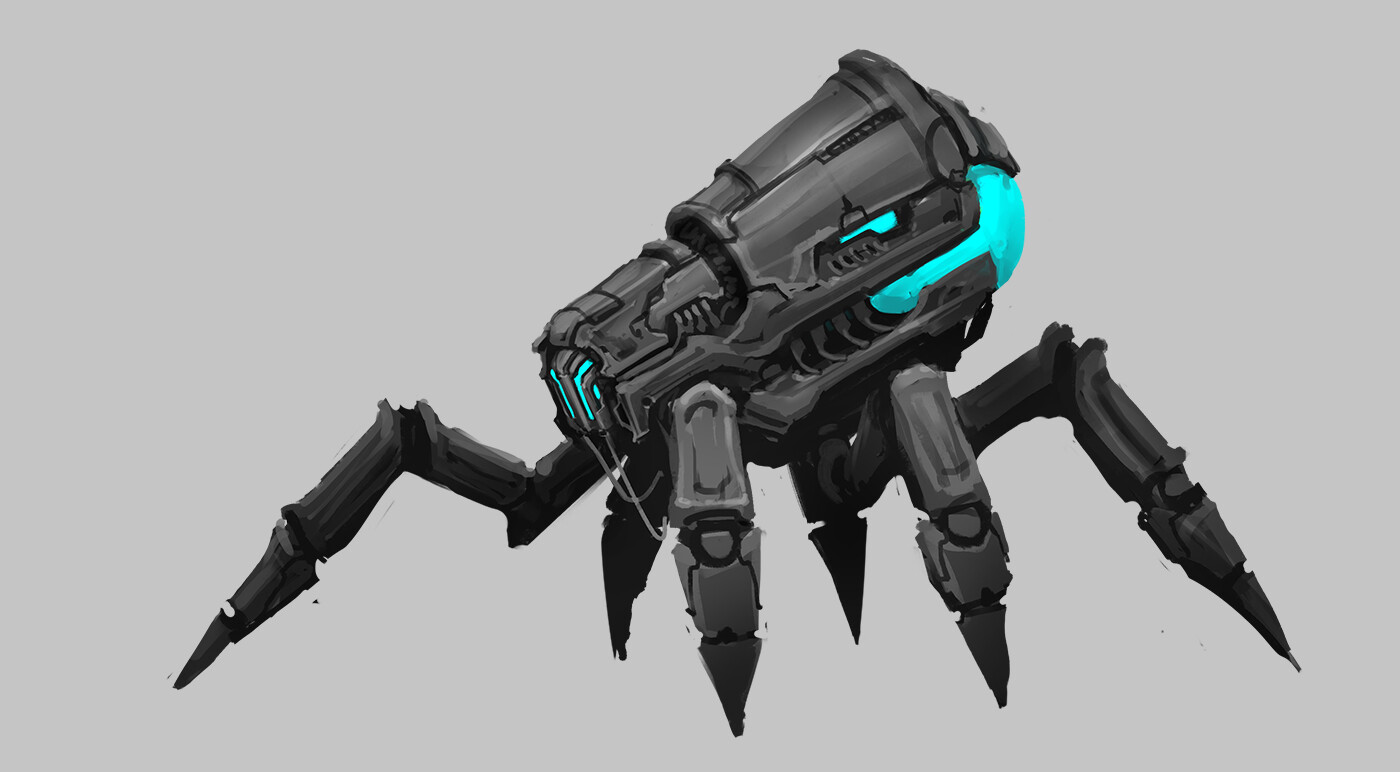Taeli Raaf
Bookworm

OUT OF CHARACTER INFORMATION
- Image Source:
- Primary Source: N/A
- Manufacturer: Aurora Industries
- Modularity: Yes
- Substances loaded into the drone's legs and hypodermic injectors can be swapped out as needed by the medical personnel.
- Drone models can be modified for different aesthetics as requested by customers
- Material:
- Agrinium
- Laminasteel
- Impervium
- Internal Medical Droid Components
- Classification: First Degree
- Misc. Equipment:
- Sensors
- Diagnostic Sensor
- Medisensor
- Thermometer
- 1x Multi-spectrum Photoreceptor
- Scanners
- Analysis
- Medical Instruments
- 6x Hypodermic Injectors, one on each leg of the drone that can be loaded with different medicinal substances such as anesthetics, stimulants, bacta, antidotes, painkillers, etc.
- Modified Stem Cell Weaver System and Storage - WEB System
- Miniature Life Support System
- Bacta Spray
- Synthflesh Dispenser
- Personal-scaled Bio-sterilization Field Projector
- Bone-Knitter
- Defibrillator
- Scalpel
- Flexclamp
- Power Generator
- One Drone-scaled Ramuh-II Power Core
- Sensors
- Designed by Aurora Industries to assist doctors and other medical personnel in clinical settings, SILK drones can be loaded with various medical substances for quick and localized delivery to patients, similar to Aurora's ALBATROSS drones, and are equipped with a plethora of medical sensors and scanners.
- SILK Drones, more so than just a simple medical drone, have been equipped with a special prototype tech that Aurora Industries has dubbed the WEB System. The drone, either through medical personnel or through one of its systems, gains a sample of a patient's tissues and stem cells, replicating and cloning those cells within its internal storage tank. When needed, the drone can be deployed to help repair delicate damage to internal organs and limbs by essentially 3-D printing and weaving the stem cells, modifying them in real time into replacement cells of that organ or tissue, into the damaged area to help regenerate the damage.
- While deployed on a critical patient, SILK drones can act as miniature life-support system to keep the patient alive as they and medical personnel work, making sure the patient's preferred gas mixture is pumped through their lungs and blood flow continues.
- SILK drones are equipped with multiple medical systems and instruments to act as surgeon support drones for doctors or even other medical droids.
- Utilizing the prototype WEB System, the drone can regenerate damaged organs and other bodily tissues and structures through manipulating and replicating stem cells provided by the patient.
- SILK drones can be used as an emergency miniature life support system for critical patients, helping to increase their odds in making it to a medical facility.
- SILK drones are not to be deployed into any combat or combat triage scenario as they have no defenses besides their impervium outer casing and have no armaments. In addition, their specialized systems are far more suited to controlled areas where work isn't likely to be interrupted such as a hospital or clinic, or if being used by a military, field hospitals.
- The WEB System, while it can be used to regenerate organ damage and tissues, can be extremely draining on the patient as the body heals itself with the integrated modified cells. Bed rest and a constant supply of nutrients is recommended after being treated.
- If the preservation field capsule fails or the Ramuh-II power core is sabotaged, the crystal within sublimated immediately into its plasma state, reducing the power output of the device by roughly half until a new crystal capsule is installed.
Developed by Aurora Industries' Droid Division under their new URZA Initiative, the SILK Medical Drone is designed by the company to be an assistant drone for medical personnel and facilities rather than something deployed directly into combat scenarios. Taking inspiration from arachnids for its design in an impervium shell, the SILK is equipped with a litany of medical sensors and scanners along with several instruments and injectors that can help in treating wounds or performing surgery.
The revolutionary technology within the SILK, however, is its prototype WEB System. As some individuals in the galaxy that suffer life threatening injuries refuse to be grafted with cybernetics, the company and its scientists saw an opportunity to experiment with regeneration technologies. The WEB System makes use of a patient's own stem cells, replicated and modified within the drone itself, and what amounts to essentially a 3-D printer within the 'mandibles' of the drone to weave a lattice of modified stem cells that swiftly become the cells of the damage organ or tissue the drone has been deployed to work on.
The SILK drone can also be utilized as a miniature life support system that can be deployed onto critical patients to give them greater odds in reaching a medical facility.
Out Of Character Info
Intent:
To submit a new medical drone for Aurora Industries to utilize and sell
Image Source(s):
Canon Link:
N/A
Permissions:
N/A
Primary Source(s):
N/A
Technical Information
Affiliation:
Aurora Industries; Individuals, Companies, and Factions that have purchased, licensed, or contracted the company
Model:
SILK Medical Drone
Modular:
Yes
Material:
Agrinium; Laminasteel; Impervium; Internal Medical Droid Components
Movement:
Multi-Legged
Armaments:
N/A
Droid Classification:
First Degree
Defense Rating:
Very High
Energy Resist:
Very High
Kinetic Resist:
Very High
Sonic Resist:
Very High
Thermal Resist:
Very High
Radiation Resist:
Very High






